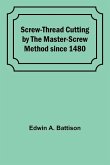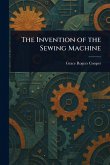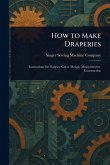"The Keif Method of Cutting Coats and Vests" offers a glimpse into late 19th-century tailoring techniques. Penned by Frederic Augustus Keif, this manual presents a specific method for crafting men's coats and vests. Though originally intended for professional tailors, modern readers interested in historical costume construction, fashion history, or vintage sewing techniques will find value in Keif's detailed instructions. The book provides insights into the pattern-making processes and construction methods prevalent at the time. A valuable resource for those seeking to understand or replicate garments from the Victorian era, this volume serves as a practical guide and historical artifact. This work has been selected by scholars as being culturally important, and is part of the knowledge base of civilization as we know it. This work was reproduced from the original artifact, and remains as true to the original work as possible. Therefore, you will see the original copyright references, library stamps (as most of these works have been housed in our most important libraries around the world), and other notations in the work. This work is in the public domain in the United States of America, and possibly other nations. Within the United States, you may freely copy and distribute this work, as no entity (individual or corporate) has a copyright on the body of the work. As a reproduction of a historical artifact, this work may contain missing or blurred pages, poor pictures, errant marks, etc. Scholars believe, and we concur, that this work is important enough to be preserved, reproduced, and made generally available to the public. We appreciate your support of the preservation process, and thank you for being an important part of keeping this knowledge alive and relevant.
Bitte wählen Sie Ihr Anliegen aus.
Rechnungen
Retourenschein anfordern
Bestellstatus
Storno








![A New Method for the Design of Retaining Walls [microform] A New Method for the Design of Retaining Walls [microform]](https://bilder.buecher.de/produkte/65/65621/65621643m.jpg)